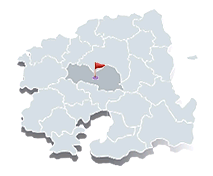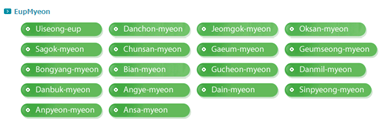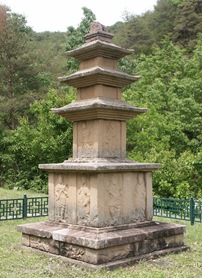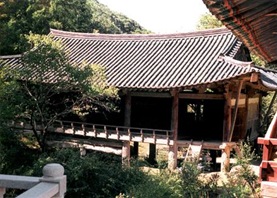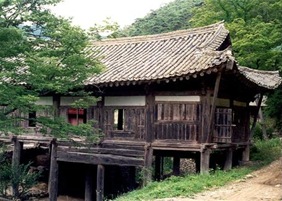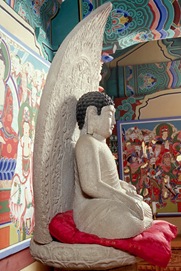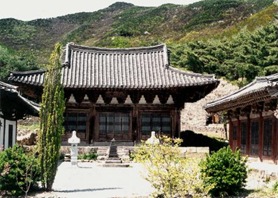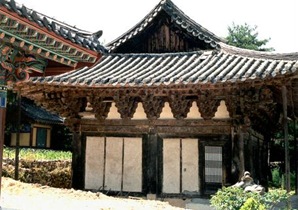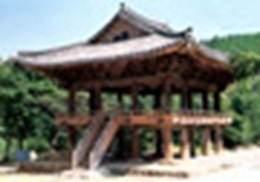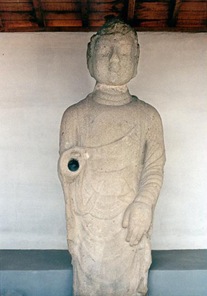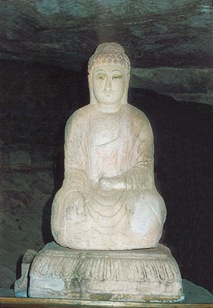“Each day in Uiseong is brighter than the last,” so it says on the homepage of Uiseong. It’s got to be because we didn’t get to do anything exciting yesterday except going on a temple and pagoda tour. So today I’m going to make it up to you by taking you on an extraordinary tour. Although Uiseong-gun is not a very big county in terms of area, it is made up of 1 eup and 17 myeons and the villages all seem to be famous for one thing or another. I don’t know where to begin.
Did you know that in Jeo-ri, Geomseong-myeon, some 115 million years ago dinosaurs used to roam in this area? I just can’t imagine how long ago that must have been, can you? 10, 20 and 50 years maybe, we can’t even live to be 100 but 115 millions years is beyond me.
Did you see the movie Jurassic Park? Yes, the term dinosaur here refers to the 5m to 25m long reptiles that roamed the earth from the Jurassic period through the Cretaceous period, just like the ones in the movie. Don’t believe me; you think I made this up? Well then, just take a good look at the photos.
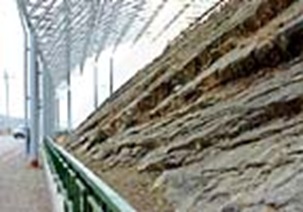
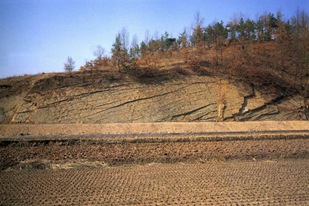
Fossils of dinosaur's footprints in Jeori, Uiseong were discovered during the extension work of a local road in 1989.
The footprints include those of 4-legged Sauropodas that are large-sized ultra herbivores; of mid-sized dinosaurs; of 2-legged mid-sized dinosaurs; and of other 2-legged fierce carnivores. There are 316 footprints on a 1,000sq.yd of land. These are precious resources of natural history revealing that this area became grassland as a river flooded over a high-temperature and high-humidity plain, and that it was a park where about 25 dinosaurs lived together.

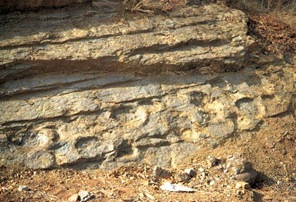
The footprints of large, medium and small herbivorous and carnivorous dinosaurs were found here at the same time, so it can be assumed that the area was a habitat for dinosaurs. These footprints were left in the silt of the river that flowed here. The fossil of the dinosaur's footprints in Jeo-ri, Uiseong, reveals the dinosaur's foot size, foot step and foot direction and is very precious in studying the shape and life of the dinosaur. So, it is highly valued academically and has been designated and protected as Natural Monument #373.
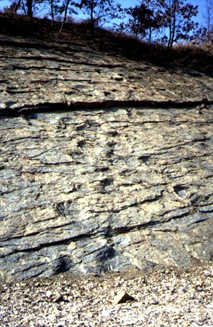
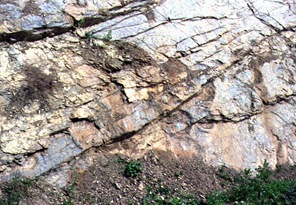
Dinosaurs became extinct 66 million years ago. There are a number of theories about the cause of their extinction such as changes in their food chain and drastic weather changes resulting from meteors. The latter is generally believed to be the most probable cause.
So now seeing is believing isn’t it? There’s still another place that we need to go to but it’s a different type of scenery altogether. You have to see it to really appreciate its beauty. The Binggye Valley is not known as one of the eight beauties of Gyeongbuk, for nothing.
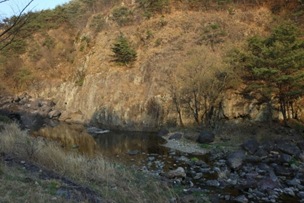
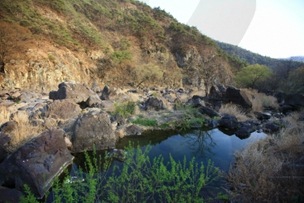
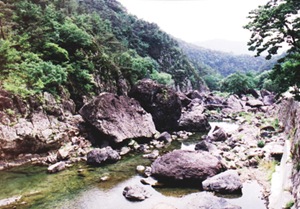
As one of the eight beauties of Gyeongbuk, Binggye Valley is called Bingsan because it has an ice hole and a cool air hole. Binggye is the stream that flows around the mountain and the village by the mountain is called Binggye-ri. In this mysterious valley, you can find amazing ice formations in the heat of summer and a hot stream in the dead of winter. Tall sheer cliffs rise up across from the village, and many fascinating stones are found in a clear stream that runs under the cliff.
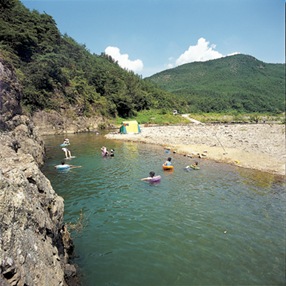
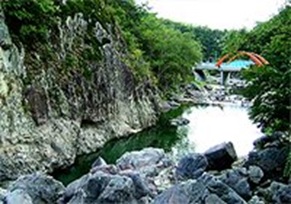
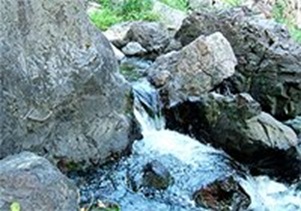
The rocks that rise in the middle of the stream were picked as one of the eight sceneries of Gyeongbuk on October 4, 1933. The local people believe that the large writing of “Binggyedong” on one of the largest rocks (10m in height and 20m in circumference) in the valley was done by General Yeo Song Yi who stopped by here, during the Japanese Invasion of 1592. A small stone monument reading, “The 1st of the Eight Sceneries of Gyeongbuk,” is erected on another large rock next to that.
Scenery 1: Ice Hole
This is a space beneath a rock shaped like a room to fit 4-5 people.
Every spring, this hole begins to generate cold air. In the middle of summer, it is frozen into ice. After fall, the ice melts. In the middle of winter, warm air comes out of the hole.
Scenery 2: Cool Air Hole
Cool air comes out of the small, yet deep gap between the rocks by the road in Dong-gu every summer. In winter, warm air comes out instead. This phenomenon is found by almost every rock in this region.
Scenery 3: Inam Rock
It is a large rock that is 1.2m in width and 2.4m in height. It is sitting in front of the former site of the Binggye Memorial Hall. The sunlight forms a shadow shaped like 仁 (generous) around noon.
Scenery 4: Euigak Pavilion
During the Japanese Invasion of 1592, Eun Bo Yoon brought the tablets of Mojae and Hoijae to Mt. Juwang and protected them for seven years. After the war, he placed the tablets at a memorial hall. His faith was highly praised and this pavilion was erected along with a monument to cherish his devotion.
Scenery 5: Sudae (Water Mill)
There used to be a large water mill where people used the stream to mill the grains every day, but it no longer exists today. Binggyejeongsa Temple of Beophwa Order was erected nearby to attract many believers.
Scenery 6: Stone Pagoda
It is a 5-story stone pagoda that was built in the late Shille Empire or early Goryeo Dynasty at the old site of Bingsansa Temple. It is currently designated as Treasure No. 327. (I already wrote about this in my previous post)
Scenery 7: Vertex of Buddha
It is a ditch on top of Buljeong Peak. The legend has it that this ditch was made by Buddha when he was fighting a dragon a long time ago.
Scenery 8: Yongchu (Pond)
There used to be a deep pond beneath the steep cliff of the valley but now it’s almost filled up. People say that the dragon which Buddha fought against hit its head here to create a large hole in the rock.
That was spectacular wasn’t it? And now we shall visit some of the villages around here and see what we can find. Do you know that Uiseong is the #1 producer of garlic in Korea? I know there are some people who don’t like garlic, but to Asians, garlic is the main ingredient in most of their cuisine. Western medicine has recognized the health giving properties of the garlic, and that’s why they have garlic pill supplements in the market today.
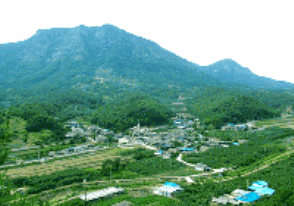
The Uiseong Native Garlic Village, in Sami-ri, Chunsan-myeonis a mountainous village with about 83% of it being forest.
The cultivation history of Uiseong garlic goes back to 1526, when the Gyeongju Choi family and the Gimhae Kim Family moved to Chiseonri (Seonam Village), where they started the cultivation of the garlic.

Uiseong garlic has been refined and improved to meet the climate and soil conditions of Uiseong and is now a natural species of Uiseong and has been cultivated from generation to generation. Uiseong Garlic is not of the foreign species. The Namdo Garlic and Daeseo Garlic (Spanish species) from abroad are not considered Uiseong Garlic although they are produced in Uiseong.
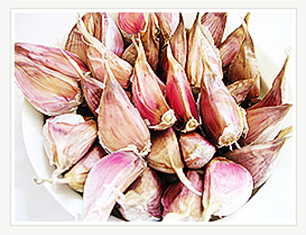
Uiseong garlic is a quality species of garlic for the cold regions. The distinctive and unique climate here (great seasonal and diurnal differences of temperatures) and soils (shale), enhance the cultivation of the Uiseong garlic. They hibernate longer than foreign species, so the roots come out right after planting but they only sprout after the winter.
The stalk is so solid that it does not break when held upside down. Uiseong garlic has 6-8 cloves per bulb. The cloves are firm and can be stored for a much longer time than the garlic from the other regions. The outer peel is nearly beige in color, however the inner peel surrounding the cloves is light brown.
They are farm garlic and not obstructed by repeated cultivation. The rice cultivation through the summer cleanses the soil and kills various insects and bacteria, so the garlic cultivated in such soil is cleaner and of better-quality as compared to the other districts.
It is known for its unique flavors and hot taste. The cloves are very juicy and it only takes a few cloves to generate a strong flavor. When crushed, Uiseong Garlic produces more juice than the other species. It suppresses the sour taste and enables the combination of the five tastes equally when pickling vegetables into Kimchi. It can be distinguished from the garlic of other provinces due to its distinctly different flavor. Just a few cloves can slow down the fermenting process of Kimchi and keep it fresh for a longer period of time. It is not only hot but also sweet. Uiseong garlic can reduce the sour taste of Kimchi. Kimchi that contains the juice of this garlic does not spoil easily even when small amounts are used.
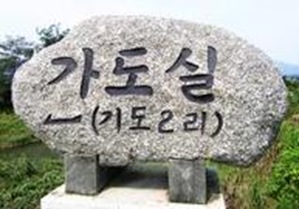
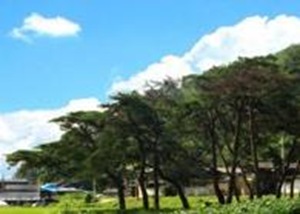
Let us now visit the Jadu Village in Anpyeong-myeon More than 78% of it is covered with woods and fields, it was where the Oh Family of Haeju settled when they first arrived in Uiseong about 400 years ago. They, together with the other first settlers from 40 households including the Kim Family of Gimhae and the Jang Family of Suncheon, have beautified the village and surrounding environments with their combined efforts.
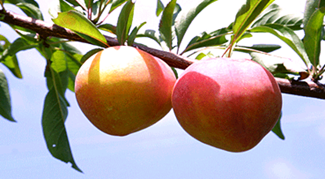
The Anpyeong plum of Uiseong is cultivated in a high diurnal temperature difference and granite sediments to become large and colorful with an extraordinary sweet and sour taste. Recognized for its quality and value, it fetches high prices. Jadu Village’s clean and beautiful natural environment makes it perfect for growing plums.
Amongst the various types of plums, the more popular are the Formosa for its large size and sweetness, the Jabong for its outstanding texture, color and sweetness, the reddish-orange Guiyang for its sweetness and juiciness and the new Chuhee for its color and sweetness with great taste and flavors.
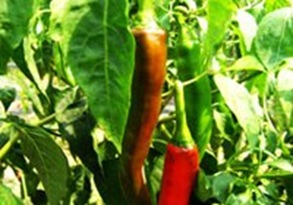

Uiseong Hot Pepper is grown in the clear mountainous soils of Uiseong. It has thick peels and produces a lot of hot pepper powder when dried. It is widely used to make Kimchi and hot pepper paste, as it preserves the fresh taste of food.
Uiseong Jadu Village developed the mulching technique 30 years ago. In particular, hot pepper of Uiseong is exposed to temperatures of 30℃ or higher and intensive sunlight between May and August. These extreme climate conditions make Uiseong hot pepper highly nutritious and colorful.
The Origin of Hot Pepper.
Hot pepper is an annual plant of the Solanceae family or a short, perennial shrub.
Hot pepper originated from South America and has a long history in the American Continent. It is widely cultivated from tropical zones to moderate zones. Hot peppers were introduced to Korea around the time when the cigarette was brought in and has been a great influence on the Korean diet. Some say that hot peppers were introduced to Korea by the Japanese invaders who tried to use hot pepper to kill the people of Joseon. However, many historical records in Japan write that hot peppers were introduced to Japan from Korea during the Japanese Invasion of 1592.
Korean people used to add a hot pepper into the jars of traditional sauces or tied red peppers and charcoal onto the ropes to announce the birth of a boy, because red hot pepper symbolized protection from bad spirits.
Uiseong Anpyeong Hot Pepper grows well in Anpyeong because it has the geographical, environmental, and climate conditions most suitable for growing hot peppers.
Therefore, even the same species of hot pepper tastes better when it is grown in Anpyeong. The use of more natural fertilizers than chemical fertilizers enhances the sweet taste of hot peppers while increasing their nutritional contents. Also, as the size and quality of the fruits are determined by the method of cultivation, accumulated experiences and outstanding technology are highly important.
The drying process is very important for hot peppers. There are several different ways to dry them. The ordinary drying process is to use the dryer. These days, sun-dried hot peppers are very popular because sunlight enhances the rich taste of hot peppers.
However, the technology of sun-drying determines the quality of the hot peppers. Uiseong Anpyeong hot peppers are sun-dried in an eco-friendly way.
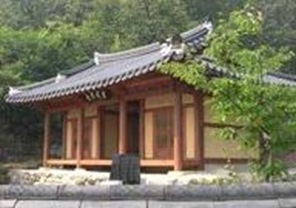
The Gido Village School is located at Gido-ri in Anpyeong-myeon. This village was dominated by the Ok Family of Euiryeong who were very dedicated in fostering the future generation to preserve the traditions. Anpyeong-myeon built the first village school in 1921 and used it to educate the local youths. The local rulers invited teachers from other regions in order to improve the quality of education. With the establishment of modernized schools, village schools are no longer used for educational purposes. It was however repaired in 1979 for preservation purposes.
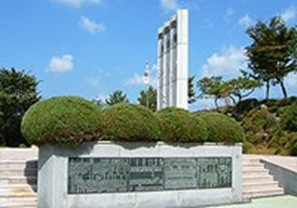
Anpyeong Urigol 3.1 Movement Memorial Monument.
There were many independent activists who participated in the 3.1 Movement which originated from here.
Urigol’s beautiful land (Daesa-2-ri) was the home of a large independent movement.
The local people gathered at a church to share their anti-Japanese ideas and secretly collaborated with the neighboring villages to fight the Japanese invaders that had invaded and exploited Korea.
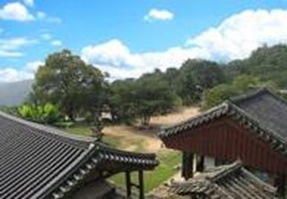

Still in Anpyeong-myeon, but in another village, in Sinan-ri is the Unramsa Temple which-is located about 10m beneath the peak of Mt. Cheondeung. About 1300 years ago, Priest Euisang established it for King Shinmun of the Shilla Empire. The temple was named Unramsa Temple because it resembled a half moon rising above Mt. Cheongdeun in the clouds.
The existing service hall called the Bogwangjeon is a 1300-year-old building. It has been rebuilt many times till today. Inside the building are three statues of Buddha and some Buddhist paintings hang behind the statues. The writings in Sanwanggak were created by Priest Beomjun around 1789. There are three other buildings that still exist, along with a 3-storey stone pagoda and a spring.
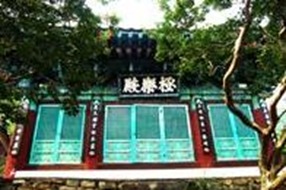
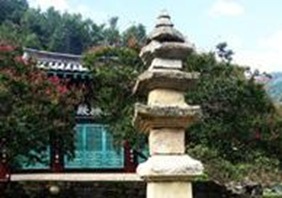
To the south of Mt. Bongdu, which is a part of Mt. Ilwol in Samchun-ri of Anpyeong-myeon is the Okryeonsa Temple. This temple is thought to be established by Priest Euisang.
Its name Okryeonsa came from the pond nearby which blooms beautiful lotus flowers. The Geukrakjeon, the existing service hall, is a 7m-high and 6m-wide wooden building with tile roofing. It has seven inner beam supports and nine outer beam supports. It is unknown exactly when this temple was built but the concave structure in the middle is the typical style of the Goryeo Dynasty.
There is a record to show that this temple was rebuilt in 1935. Inside the Geukrakjeon, there is a statue of the Amitabha in the center. In the rear, there are Buddhist paintings displayed at the back of the statue. Other relics include a stone pagoda and another statue of Buddha. The 6-story stone pagoda was originally enshrined in front of Geukrakjeon, but was moved to the east of the building by the former Master Priest Baekwol. The buildings have not been perfectly preserved though.

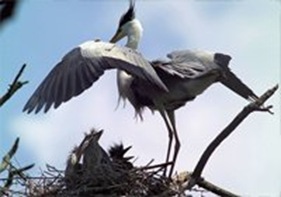
Any birdwatchers here? Uiseong’s Gray Heron Habitat located at Jungryul-ri of Sinpyeong-myeon might please you. Jungryul-ri is Korea’s greatest gray and white heron habitat and has been holding Gray Heron Festivals. Gray and white herons come here every February and March and stay until mid-July. Seeing about 5,000 herons covering the mountain is more than what words can describe.
Similar to white heron, gray heron is slightly bluish-gray in color. Gray heron is also, if you remember, the symbolic bird of Uiseong-gun.
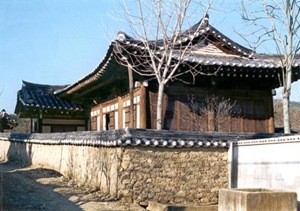
Uiseongmanchwidang (Manchwidang Pavilion in Uiseong) Tangible Properties #169 can be found in Sachon-ri, Jeomgok-myeon. This hall, which was built in the style of the mid-Joseon period, took three years to complete.
Its name, Manchwidang, was derived from the pen name of Kim Sawon, who held a high military post under King Seonjo.
It was partially repaired in 1711, and in 1727 an additional structure called the Bokjae was built.
Small wings were added to both sides of the hall in 1764.
The hall has a half-gabled, half-hipped roof.
The eaves of the roof are supported by single, wing-like brackets. Except the Ondol room which has a heated floor, the floors of the hall are wood.
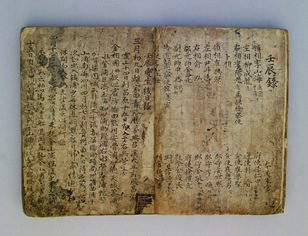
The Jinju National Museum in Uiseong is home to the original manuscripts of the Jeongmallok (Battles and government and civilian situations during the 1592 Japanese Invasion of Korea) Regional Treasure #880.
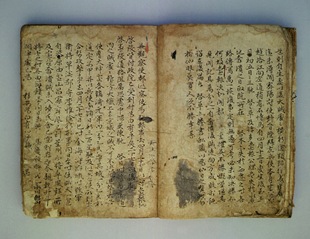
It was the journal of Yi Takyeong/Lee Tak-young (1541~1610), who was the staff officer in the Gyeongsanggamsa governor’s office at that time, serving under Kim Soo, an officer on patrol during the Japanese Invasion of Korea in 1592 and who greatly contributed to Korea's victory by proposing various tactics as an officer of Hakbong Kim, Seong-il in 1593. After the war, he refused a prize given by the government and was later promoted to Central Vice-Envoy.
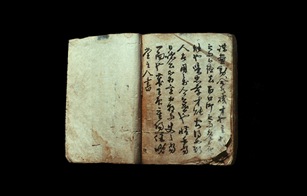
It consists of 2 volumes named Heaven, and Earth or Geon and Gon. This journal was written over a 7 year period from 1592 to 1598. The volume called Heaven contains a list of the seats of various government officials including the Prime Minister who participated in the war against the Japanese Invasion of Korea in 1592 on its rear book jacket, and the daily experiences under the title of ‘Imjinbyeonsaenghuilrok’. Imjin articles were written down on a daily basis but from 1593 to 1598 only important events were recorded by year and month. Except for the records of the 10 days starting April 14th, 1592, (the day of the out break of the war;) it has an almost perfect record of the Imjin war.
The volume called Earth starts with the beginning of the Japanese Invasion of Korea in 1592 and explains the reason why the daily records and circulars were recorded, and also lists important messages, circulars and manifestos. The records were complete from the beginning until the end of the war, except for the omission of the 10 days as stated above.
These books are valued as very precious historical documents for the study of the Japanese Invasion of Korea in 1592 and are even more valued as historical material due to the fact that the book ‘Jeongmanrok’ was named by King Seonjo.
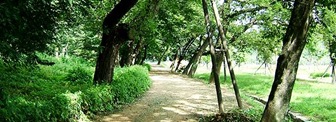
The Roadside Forest or Garo Forest, in Sachon-ri Uiseong, Natural Monument #405 was created by Kim Mokgong, the progenitor of the Andong Kim's family when he moved from Andong to Sachon.
He planted a windbreaker forest against a strong wind from the west plain of the village. Over 500 trees of 10 species including the Japanese Hackberry, and the Zelkova are growing in this forest.

Asanoeammaeul or Oeammaeul village in Asan (Important Folklore Materials #237). was known as "Sanwoon-ri" before. The exact date of its existence is unknown, but it has been known that the Yungcheon Yi family settled here during the reign of King Myungjong of the Joseon Kingdom. There are over ten traditional houses including the Woongokdang, and the Sowoodang in this village. It has been said that Yi Gabal, a past 6th generation grandfather of the present owner, built the Sowoodang in the early 19th Century and the inner house was reconstructed around 1880.
The inner house which was built in the shape of the Hangeul letter "ㄱ" and the detached house, the Hangeul letter "L," surround the yard, making the house formed like an open square. There is a room beside the gate to the south and an outside toilet to the west and another toilet in the northwest of the inner house. Another fence, to the west of the inner house, was placed to make space, so that a separate house could be built into it. Around the house there is a beautiful garden that has a pond and lots of trees and all the doors from the inner house and the detached house opened into the garden.
As an upper class house built in a simple and unsophisticated form, it is a good example of the outhouse building that shows the elegance and the refinement at that time.


And now to end our tour in Uiseong I’m going to take you to the Geumbong Recreational Forest in Geumbong-ri Oksan-myeon where I feel like staying for the night. They say one can see the apple blossoms in spring; enjoy the cool stream waters and the serenade of crickets in summer, the gorgeous foliage in autumn, and splendid snowscapes in winter.
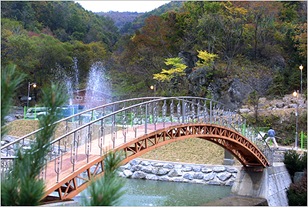
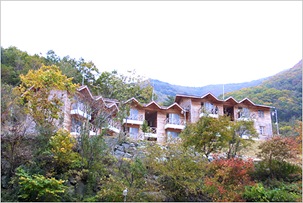
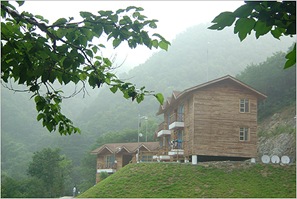
The hiking trails that surround Geumbong Recreational Forest, and promenades in Cheongseokgol Valley, will give you a chance to experience the rejuvenating calm of the forest. Also, the log cabins made of various woods such as oak, pine, white birch, and Korean spruce make you feel truly at home amidst nature.
And so it’s time to say goodbye once again. See you real soon. Happy New Year!

